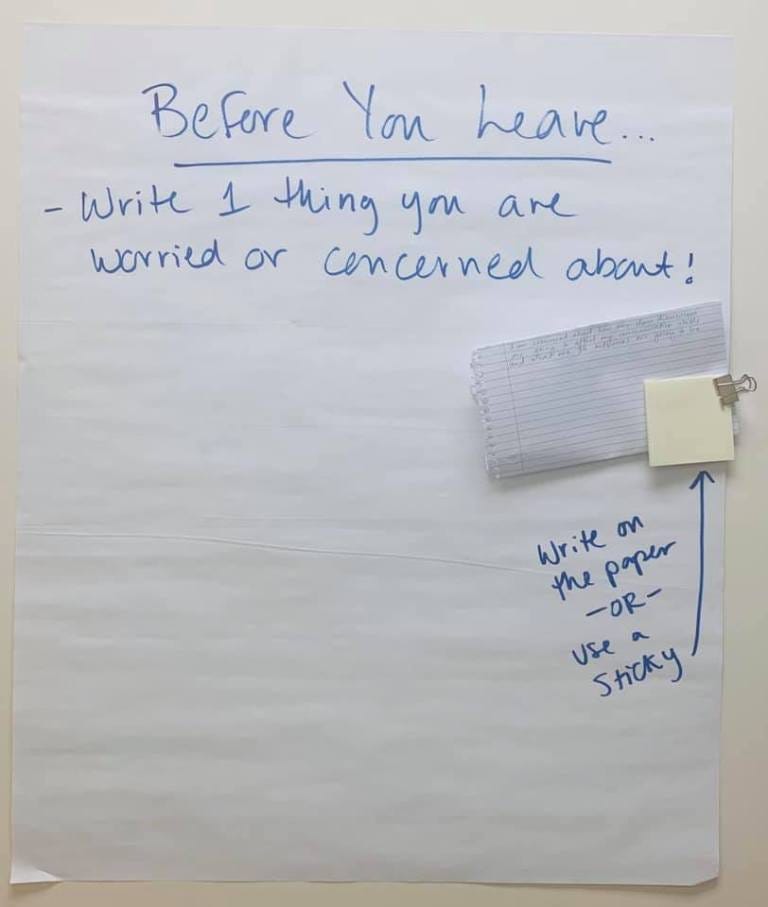Tech Thursday: Digital Exit Tickets
Get a quick comprehension check or temperature check to gauge how students are doing.
I really like using exit tickets (“tickets out”) with my classes. I’ve used them to just check in on how my students are feeling, and have also used them in more content-focused ways (“What are the parts of a thesis statement?”). The goal is to get a quick check of understanding or temperature check to gauge how students are doing.
In-person, I use sticky notes or notecards to collect quick responses, typically anonymous, like this:
Online, or in physically distanced classrooms, it’s not as practical to pass out and collect notecards or ask students to cluster around a large sticky paper to write a quick thought down. There are plenty of high(er) tech options. I am a fan of Google forms for this purpose because they are extremely simple to duplicate if you want to have a new copy for each class meeting, and they don’t require students to log in. More steps almost always mean fewer students will respond. Just create the form, and then generate a short link or, even better, a QR code to post or display as students are getting ready to leave class. If you want students to be able to see what other students have responded, OnlineQuestions is another method.
Past Tech Thursdays
Student engagement: Interactive quizzing / Online question management for classes & presentations / Wheel of Names (random name generator) / Providing audio feedback
Health: Two programs to reduce eyestrain
Zoom: Screen share in Zoom / How to Zoom in in Zoom
Research: Managing references / Find free versions of articles / Text Capture Apps
Using images:Remove distracting backgrounds from photos / Using screenshots
Google Docs: “Make a copy” function in Google Drive / Working in shared Google docs / Collaborating in Google Slides / Turn Google Forms into a formatted document
Canvas:Canvas “What-if” grades
Productivity: Text Expanders / Mailbird email program / Voice-to-text options / Custom URLs & QR codes / DropBox Paper for collaboration





